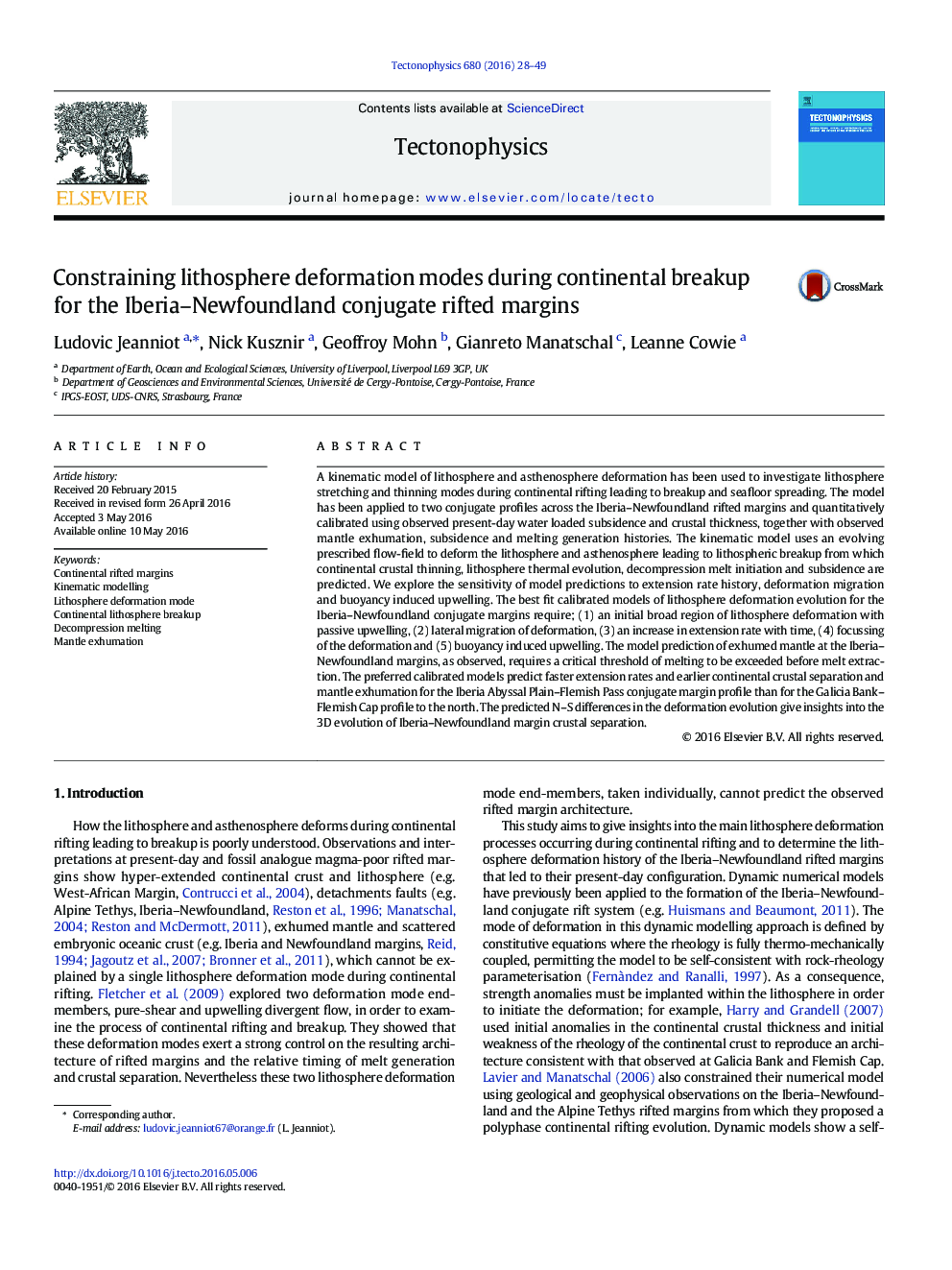| Article ID | Journal | Published Year | Pages | File Type |
|---|---|---|---|---|
| 6433343 | Tectonophysics | 2016 | 22 Pages |
â¢Lithosphere deformation modes evolve during continental rifting leading to breakup.â¢Lithosphere deformation evolves from wide to narrow widths, and it includes jumps and continuous lateral migration.â¢Buoyancy induced upwelling initiates earlier melting, speeds up lithosphere thinning while maintaining weaker subsidence.â¢Melt retention is necessary for the formation of magma-poor rifted margins.â¢A diachronous deformation evolution is preferred for the Iberia-Newfoundland, consistent with the rift northward propagation.
A kinematic model of lithosphere and asthenosphere deformation has been used to investigate lithosphere stretching and thinning modes during continental rifting leading to breakup and seafloor spreading. The model has been applied to two conjugate profiles across the Iberia-Newfoundland rifted margins and quantitatively calibrated using observed present-day water loaded subsidence and crustal thickness, together with observed mantle exhumation, subsidence and melting generation histories. The kinematic model uses an evolving prescribed flow-field to deform the lithosphere and asthenosphere leading to lithospheric breakup from which continental crustal thinning, lithosphere thermal evolution, decompression melt initiation and subsidence are predicted. We explore the sensitivity of model predictions to extension rate history, deformation migration and buoyancy induced upwelling. The best fit calibrated models of lithosphere deformation evolution for the Iberia-Newfoundland conjugate margins require; (1) an initial broad region of lithosphere deformation with passive upwelling, (2) lateral migration of deformation, (3) an increase in extension rate with time, (4) focussing of the deformation and (5) buoyancy induced upwelling. The model prediction of exhumed mantle at the Iberia-Newfoundland margins, as observed, requires a critical threshold of melting to be exceeded before melt extraction. The preferred calibrated models predict faster extension rates and earlier continental crustal separation and mantle exhumation for the Iberia Abyssal Plain-Flemish Pass conjugate margin profile than for the Galicia Bank-Flemish Cap profile to the north. The predicted N-S differences in the deformation evolution give insights into the 3D evolution of Iberia-Newfoundland margin crustal separation.
